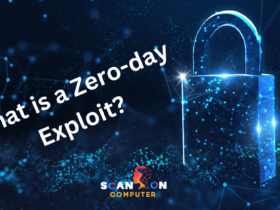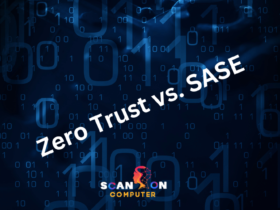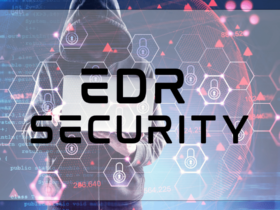In an era where cyberattacks are more frequent and sophisticated than ever, traditional antivirus solutions alone no longer suffice. Whether you’re an IT manager, CEO, or cybersecurity professional, understanding advanced solutions like Endpoint Detection and Response (EDR) is essential.
Introduction: Understanding the Critical Role of EDR in Cybersecurity
What is Endpoint Detection and Response (EDR)? Simply put, EDR is a cybersecurity technology designed to continuously monitor, detect, and respond to threats at the endpoint level—such as laptops, desktops, and servers—ensuring threats are stopped quickly before they spread throughout the network.
This guide covers everything you need to know about EDR: how it works, its key benefits, how it compares to other security tools, best practices for deployment, and top industry trends shaping its future.
What is EDR? Definition and Background
Endpoint Detection and Response (EDR) is a security solution that focuses on identifying suspicious activities and potential breaches on endpoint devices in real time. Endpoints are often the weakest link in organizational security since they provide gateways for attackers via malware, ransomware, zero-day exploits, or insider threats.
Unlike traditional antivirus software that primarily relies on signature-based detection of known threats, EDR employs a mix of behavioral analysis, machine learning, and threat intelligence to detect suspicious patterns and indicators of compromise. This shift from reactive to proactive security helps organizations mitigate risks faster and more effectively.
EDR solutions don’t just detect threats; they also provide automated or guided response capabilities to isolate infected devices, remediate threats, and conduct forensic investigations to understand the attack vector. This comprehensive approach is why EDR is becoming the cornerstone of modern cybersecurity strategies globally.
How EDR Works: Core Components and Threat Lifecycle?
Understanding how EDR functions helps visualize its impact on security posture. EDR systems generally follow these interconnected components and stages:
1. Continuous Monitoring and Data Collection
EDR agents are installed on endpoints to collect data on running processes, file activity, network connections, system logs, and user behavior. This telemetry forms the backbone for detecting anomalies.
2. Threat Detection and Analysis
Using behavioral analytics, heuristics, and AI-driven models, EDR platforms scrutinize collected data to identify patterns that deviate from normal operations—signaling potential threats.
3. Alerting and Prioritization
When suspicious activity is identified, EDR triggers alerts prioritized based on severity, allowing security teams to focus on urgent and impactful risks.
4. Automated and Manual Response
Advanced EDRs automate immediate actions such as quarantining affected endpoints or terminating malicious processes. They also enable manual response workflows for deeper investigation and remediation.
5. Forensics and Investigation
EDR platforms log detailed information for security analysts to perform root cause analysis and retrospective threat hunting, bolstering prevention strategies.
This end-to-end lifecycle enables organizations to quickly detect, respond to, and recover from endpoint threats before they cause widespread damage.
EDR vs Antivirus and EPP: Key Differences
Many organizations confuse EDR with traditional antivirus or Endpoint Protection Platforms (EPP). Understanding their differences is crucial for informed security investments.
| Feature | EDR | Antivirus | Endpoint Protection Platform (EPP) |
|---|---|---|---|
| Focus | Detects & Responds to advanced threats | Detects known malware signatures | Prevents infections, some detection |
| Detection Method | Behavioral, AI-driven, heuristic analysis | Signature-based detection | Signature with limited heuristic |
| Response Capability | Automated & guided incident response | Basic removal/quarantine | Prevention & basic removal |
| Visibility | Full endpoint activity and threat context | Limited | Broader endpoint security functions |
| Use Case | Proactive threat detection & response | Basic malware defense | Prevent infections across devices |
Benefits of EDR for Organizations
Deploying an EDR solution delivers measurable security improvements and operational efficiencies:
-
Improved Threat Visibility: Continuous monitoring offers unprecedented insight into endpoint behavior, uncovering stealthy threats earlier.
-
Faster Incident Response: Automated and orchestrated actions speed up containment and remediation, reducing dwell time.
-
Reduced Impact of Ransomware: Rapid detection helps stop ransomware before it encrypts critical files or spreads laterally.
-
Enhanced Compliance: Many regulatory frameworks recommend or mandate endpoint monitoring and logging.
-
Informed Security Decisions: Rich forensic data from EDR feeds broader security and business risk assessment processes.
-
Cost Savings: Detecting and responding to threats faster lowers potential incident costs and operational disruptions.
Selecting the Right EDR Tool: What to Look For
Choosing an EDR solution requires balancing features with organizational needs. Consider these criteria:
-
Comprehensive Visibility: Ability to monitor all endpoints, including remote and mobile devices.
-
Detection Accuracy: Low false positive rates beneath rigorous behavioral analysis.
-
Automated Response Options: Workflow automation for isolation, removal, or rollback.
-
Integration Capabilities: Compatible with SIEM, SOAR, and other security infrastructure.
-
User Experience: Lightweight agent impacts and intuitive management consoles.
-
Threat Intelligence: Continuous updates and global intelligence feeds.
-
Vendor Support & Scalability: Reliable customer service and flexibility to grow with the business.
Leading solutions in 2025 include CrowdStrike Falcon, SentinelOne, Microsoft Defender for Endpoint, Palo Alto Cortex XDR, and Fortinet FortiEDR—all varying in features and pricing to fit different environments.
EDR Deployment Best Practices
An effective EDR deployment requires strategic planning:
-
Pilot & Baseline: Start with a limited rollout to understand normal endpoint behaviors.
-
Define Alert Frameworks: Customize alerts and response playbooks tailored to your environment.
-
Train Security Teams: Ensure SOC analysts are well-versed with tool functionalities and threat hunting techniques.
-
Regularly Update Policies: Adapt whitelist/blacklist rules and detection thresholds.
-
Evaluate Performance: Monitor system impact and fine-tune for minimal business disruption.
-
Complement with Other Controls: EDR is one piece in a layered defense including network security, identity management, and user training.
Future Trends in EDR and Endpoint Security
Looking ahead, several trends will define EDR evolution:
-
AI-Powered Detection: Next-gen machine learning models to improve accuracy and automate complex responses.
-
Zero Trust Security Integration: Embedding endpoint trust evaluation as fundamental in zero trust architectures.
-
Cloud-Native EDR Platforms: Scalable, cloud-delivered solutions for hybrid and remote workforces.
-
Extended Detection & Response (XDR): Unified detection across endpoints, networks, cloud, and applications.
-
Self-Healing Endpoints: Advanced automation for autonomous threat remediation and device recovery.
FAQ: Endpoint Detection and Response (EDR)
1. What is EDR used for?
EDR is used to continuously monitor and respond to threats on endpoint devices like laptops and servers to prevent breaches and minimize damage.
2. Can EDR stop ransomware?
Yes, EDR can detect ransomware behaviors early and isolate endpoints to stop encryption and lateral movement.
3. Does EDR impact system performance?
Modern EDR agents are designed to be lightweight and minimally intrusive, though actual impact varies by solution and endpoint specs.
4. How is EDR different from antivirus?
Antivirus detects known threats using signatures, while EDR detects suspicious behavior and enables incident response capabilities.
5. How often should EDR policies be reviewed?
Policies and detection rules should be regularly reviewed and updated quarterly or more frequently based on threat landscape changes.
Conclusion: Is EDR Essential for Your Security Strategy?
In a threat landscape that evolves daily, Endpoint Detection and Response (EDR) is a critical investment for any organization aiming to protect digital assets proactively. Offering advanced detection, real-time response, and rich forensic insights, EDR complements traditional security measures and elevates your defense posture significantly.
Whether you operate a growing business, large enterprise, or regulated institution, understanding and deploying the right EDR tooling aligns with industry best practices and future-proofs your cybersecurity investments.













Leave a Reply
View Comments